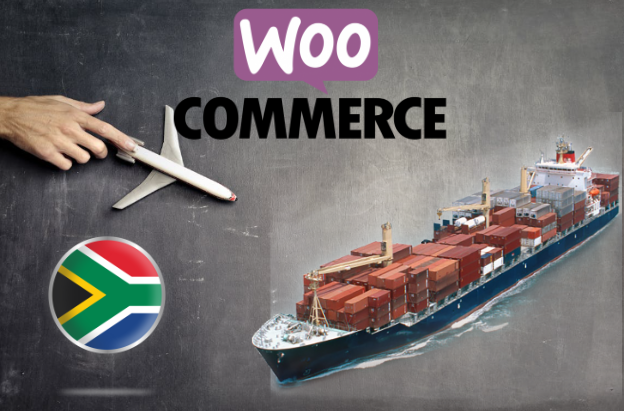Today we will explore the world of WooCommerce shipping in South Africa.
As an e-commerce business owner or manager, you understand the importance of getting your products to your customers in a timely and cost-effective manner.
With the increasing popularity of online shopping, the need for reliable and efficient shipping solutions has never been greater.

In this article, we will explore the ins and outs of WooCommerce shipping in South Africa.
We will be focusing on the plugins, methods, and best practices that can help you streamline your shipping process and deliver outstanding customer service.
Whether you are just starting out or looking to optimize your existing shipping process, this article will provide valuable insights for you.
It will offer you practical tips to help you deliver outstanding delivery experiences to your customers.
Table of Contents
Understanding WooCommerce Shipping
WooCommerce as an e-commerce platform
WooCommerce is a popular open-source e-commerce platform built on WordPress.
It offers a range of features to help businesses create and manage online stores.
These features include order tracking, inventory management, secure payments, customer engagement, and shipping integration.
With its user-friendly interface and extensive range of extensions, WooCommerce is a versatile solution for businesses of all sizes looking to establish an online presence.
Key features of WooCommerce shipping functionality
WooCommerce offers several default shipping options, such as flat rate, free shipping, and local pickup.
These options can be customized and combined to suit the specific needs of your business.
Additionally, WooCommerce allows for the creation of shipping classes.
These classes can be associated with specific products, and the use of shipping zones to define different shipping rates for different regions.
Importance of flexible and customizable shipping options
Flexible and customizable shipping options are crucial for e-commerce businesses.
They allow for the creation of shipping methods that cater to the unique needs of different products and customer segments.
This can help reduce cart abandonment and improve customer satisfaction.
This is because they provide accurate and transparent shipping information at the checkout stage.
Furthermore, the ability to set up shipping classes and zones enables businesses to offer targeted shipping rates.
These rates are based on factors such as product weight, size, and location, ensuring that shipping costs are fair and competitive.
Shipping Challenges in South Africa
1. Infrastructure challenges
South Africa’s transportation infrastructure
South Africa’s ports play a crucial role in international trade, serving as a strategic location for port infrastructure and maritime trade.
With approximately 30,000 ships sailing around South Africa annually, the country’s ports face enough challenges.
These challenges include capacity constraints, disruptions due to load-shedding, slow digitalization uptake, and erratic weather patterns that can impact operations significantly.
These hiccups highlight the need for improvements in port logistics to enhance efficiency and reduce congestion.
Impact on shipping efficiency
The challenges faced by South Africa’s transportation infrastructure, including port congestion, outdated equipment, and security concerns, have a direct impact on shipping efficiency.
Issues such as inadequate storage facilities, dated handling equipment, and safety risks pose hurdles to effective port operations and overall logistics effectiveness.
Addressing these infrastructure challenges can be done through investments in upgrading facilities.
This includes enhancing security measures and implementing digitalization and automation solutions that can help improve shipping efficiency in South Africa.
2. Regional diversity
Geographical and demographic diversity in South Africa
South Africa’s regional diversity presents unique logistical challenges due to variations in geography and demographics across the country.
From urban centers to remote rural areas, the diverse landscape of South Africa influences shipping logistics by requiring tailored approaches to meet the specific needs of different regions.
How regional differences impact shipping logistics
The geographical and demographic diversity in South Africa impacts shipping logistics by necessitating customized solutions for transportation and delivery across various regions.
Factors such as varying infrastructure development, population density, and accessibility can affect the efficiency and cost-effectiveness of shipping operations within the country.
3. Regulatory considerations
Shipping regulations in South Africa
Shipping regulations in South Africa govern various aspects of maritime trade.
These include compliance requirements for e-commerce businesses involved in shipping activities.
Understanding and adhering to these regulations is essential for businesses to operate legally and efficiently within the country’s shipping industry.
Compliance requirements for e-commerce businesses
E-commerce businesses engaging in shipping activities in South Africa must comply with relevant shipping regulations to ensure smooth operations and legal compliance.
Meeting regulatory standards related to cargo handling, customs procedures, safety measures, and security protocols is crucial.
It maintains trust with customers and partners while navigating the complexities of the shipping landscape in South Africa
WooCommerce Shipping Settings
Configuring basic shipping settings
Setting up shipping zones
Setting up shipping zones in WooCommerce is essential for defining different regions where you will ship your products.
This allows you to set specific shipping methods and rates for each zone.
To create shipping zones, navigate to WooCommerce > Settings > Shipping and click on “Add zone.”
Enter a descriptive zone name, select the applicable regions (countries, states, continents), and choose the shipping methods available for that zone.
Defining shipping methods
After setting up shipping zones, you can define various shipping methods within each zone.
WooCommerce offers options like flat-rate shipping, free shipping, and local pickup.
Flat-rate shipping charges a fixed rate regardless of weight or destination, while free shipping allows you to offer free delivery under specific conditions.
Local pickup enables customers to collect their orders directly from your physical location.
Customizing shipping rates
Flat-rate shipping options
Flat-rate shipping is a straightforward method where you charge a fixed rate for shipping regardless of the order’s weight or destination.
This provides transparency to customers and simplifies the checkout process by offering predictable shipping costs.
Calculated shipping rates based on weight or dimensions
For more accurate pricing based on factors like weight or dimensions, WooCommerce allows you to set up calculated shipping rates.
This feature calculates the shipping cost based on the product’s weight, size, and destination, providing customers with dynamic and accurate pricing during checkout.
Integration with local carriers
Connecting WooCommerce with South African shipping carriers
Integrating WooCommerce with local South African carriers enhances your shipping capabilities by allowing you to offer reliable and efficient delivery services to your customers within the country.
You can connect with carriers like FastWay or the South African Post Office to streamline your domestic shipments.
Benefits of using local carriers for domestic shipments
Utilizing local carriers for domestic shipments in South Africa offers several advantages.
These pros include faster delivery times, cost-effective solutions tailored to local needs, better tracking capabilities, and improved customer satisfaction due to reliable service within the country’s borders.
By integrating with local carriers, you can optimize your shipping process and provide a seamless experience for your customers in South Africa.
Addressing Shipping Costs
Strategies to manage shipping costs
Implementing free shipping promotions
Implementing free shipping promotions can attract customers and increase sales by offering a cost-effective incentive.
Businesses can set conditions like a minimum order value for free shipping to encourage larger purchases and offset the cost of shipping.
Offering discounted shipping rates for specific regions
Offering discounted shipping rates for specific regions can help businesses optimize costs while catering to different customer segments.
By strategically adjusting shipping rates based on regions or customer demographics, businesses can attract more customers and improve overall competitiveness.
Communicating shipping costs to customers
Transparent pricing and its impact on customer satisfaction
Transparent pricing is crucial for customer satisfaction as it builds trust and helps manage expectations.
Communicating shipping costs upfront during the checkout process can reduce cart abandonment rates and enhance the overall shopping experience for customers.
Strategies to handle customer expectations regarding shipping fees
To manage customer expectations regarding shipping fees, businesses can provide clear information on shipping costs, delivery times, and available options.
Offering multiple shipping choices, setting realistic delivery estimates, and providing updates on order status can help meet customer expectations and minimize dissatisfaction related to shipping fees.
Overcoming Shipping Challenges in South Africa with WooCommerce
Innovative solutions for infrastructure challenges
Utilizing technology to optimize delivery routes
Incorporating technology to optimize delivery routes can enhance efficiency and reduce costs in the shipping process.
By leveraging GPS systems, route optimization software, and real-time tracking, businesses can streamline their logistics operations and ensure timely deliveries.
Collaborating with logistics partners for streamlined operations
Collaborating with logistics partners can help businesses overcome infrastructure challenges by tapping into established networks and expertise.
By working closely with reliable logistics providers in South Africa, businesses can benefit from improved supply chain visibility.
They can also have enhanced delivery capabilities and access to innovative solutions that address specific logistical hurdles.
Regional-specific strategies
Tailoring shipping options for different provinces or cities
Tailoring shipping options for different provinces or cities in South Africa is essential to address regional diversity effectively.
Businesses can customize shipping methods, rates, and delivery times based on the unique characteristics of each region.
They can optimize their shipping strategies and meet the specific needs of customers across the country.
Addressing challenges specific to rural areas
This involves implementing specialized solutions to overcome logistical hurdles such as limited infrastructure, longer delivery times, and higher costs.
By partnering with local carriers familiar with rural regions, businesses can navigate these challenges more effectively and ensure reliable deliveries to customers in remote areas.
Best Practices for WooCommerce Shipping in South Africa
1. Personalize packaging with handwritten notes or branded stickers to create a memorable customer experience.
2. Be transparent about shipping costs to avoid checkout surprises and maintain customer trust.
3. Use tracking features to keep customers informed about their shipments in real time.
4. Offer discounts to incentivize larger purchases and improve customer satisfaction.
5. Provide options for various shipping speeds to cater to diverse preferences.
6. Prioritize communication with customers to keep them informed about order and delivery updates.
7. Implement easy returns and exchanges for a hassle-free process.
8. Geo-target promotions based on regional preferences to enhance customer engagement.
9. Embrace sustainability by opting for eco-friendly packaging options.
10. Collect feedback from customers to continually improve your shipping experience.
Conclusion
Efficient shipping is paramount for e-commerce success, influencing customer satisfaction, loyalty, and overall business performance.
In the context of South Africa, businesses are encouraged to capitalize on WooCommerce adaptable shipping features to optimize strategies and gain a competitive edge.
Customizing shipping methods, configuring rates and taxes, implementing real-time tracking, and adhering to best practices specific to the South African market can result in improved operational efficiency.
This can heighten customer satisfaction and overall e-commerce success.


